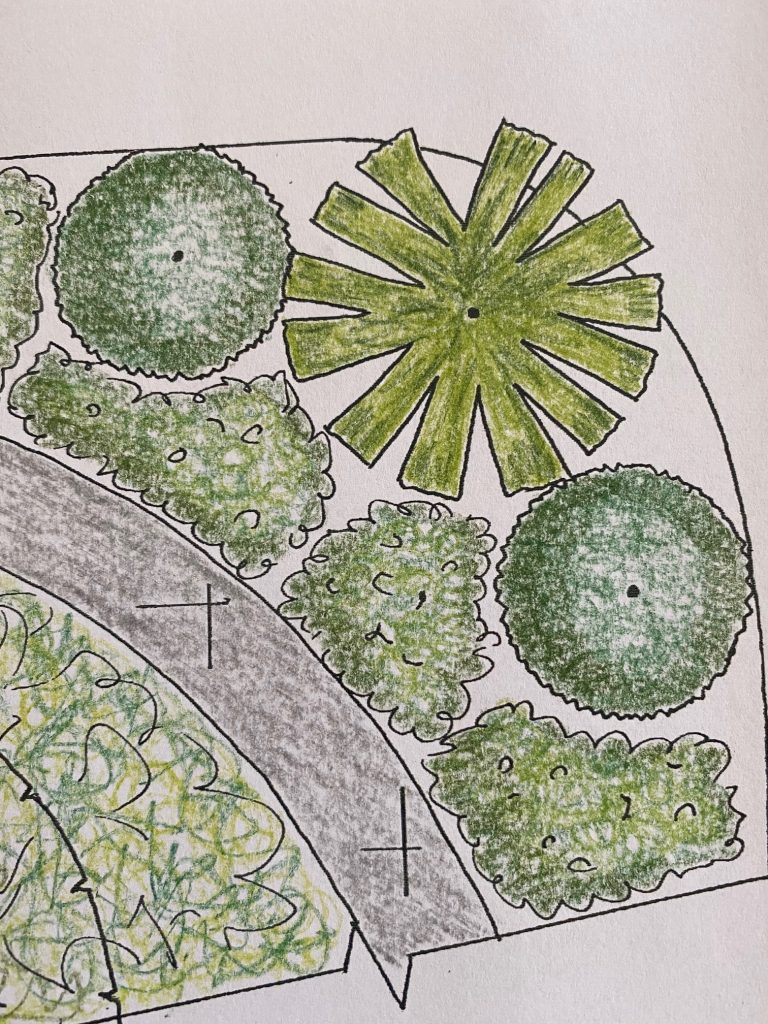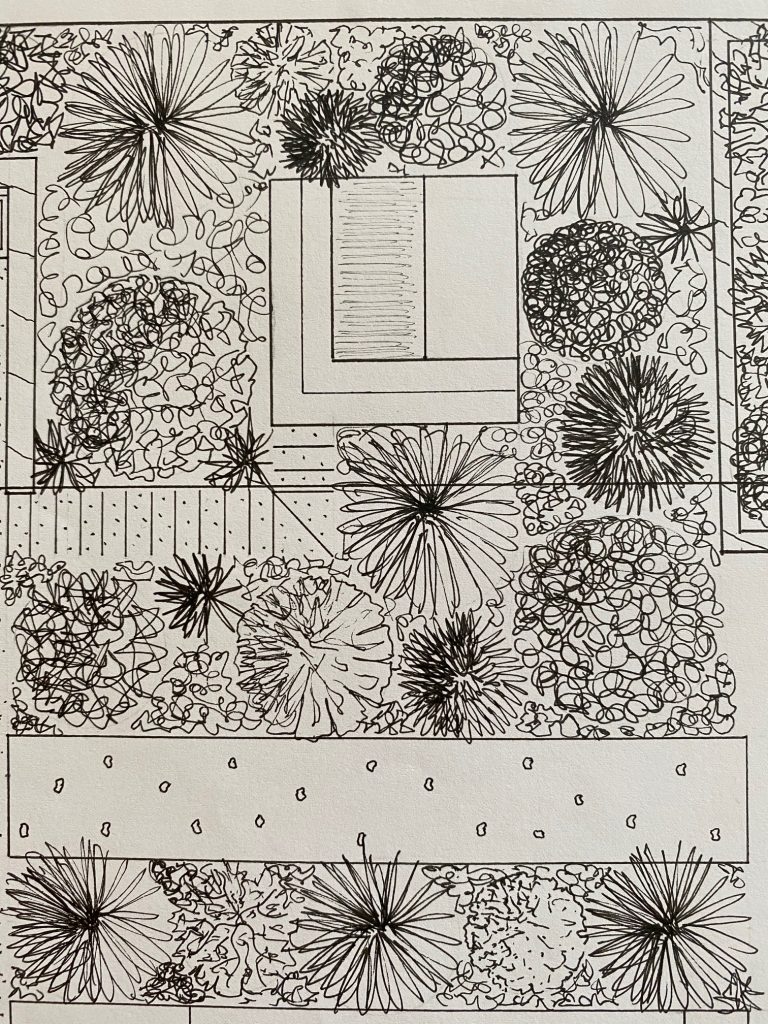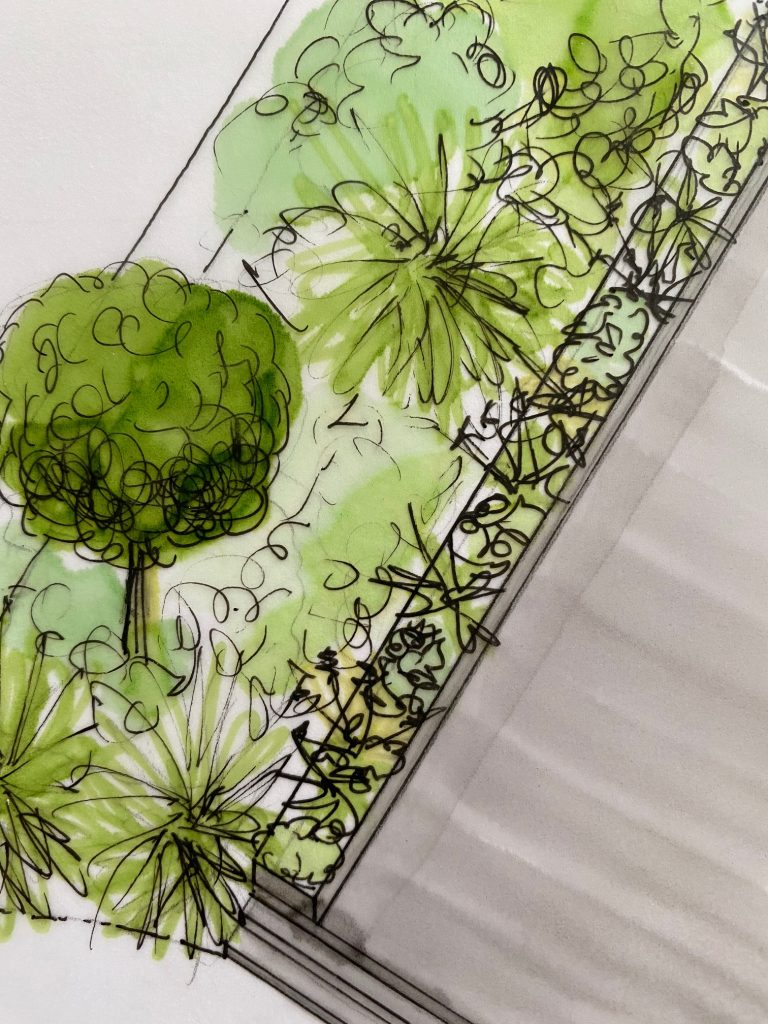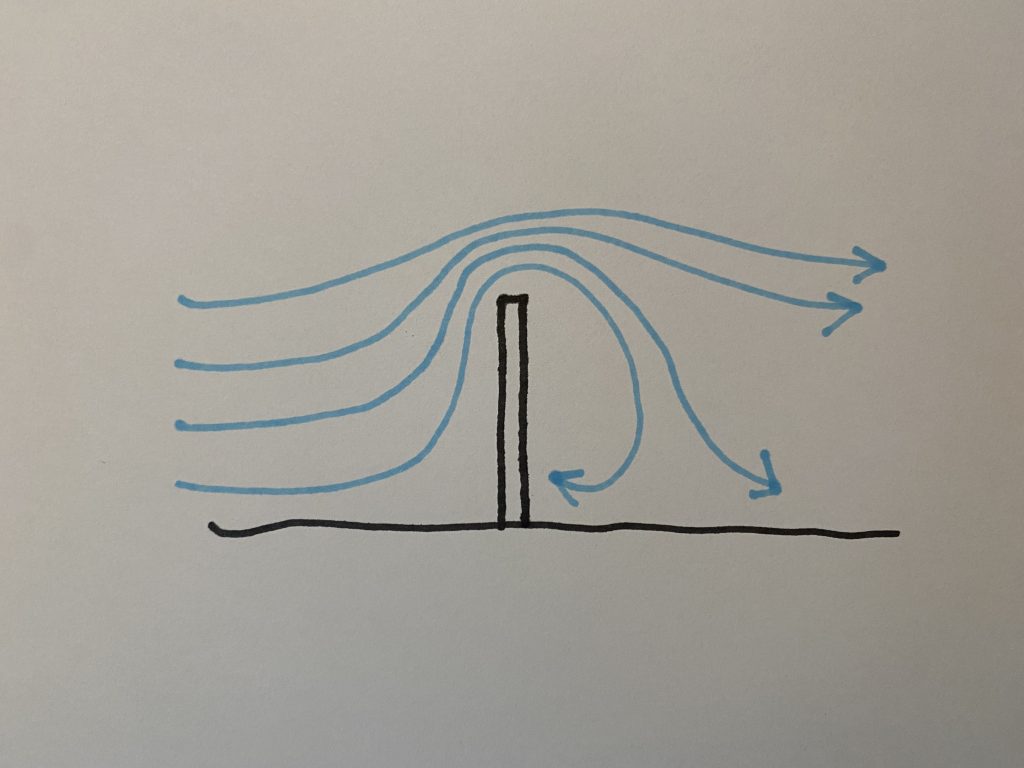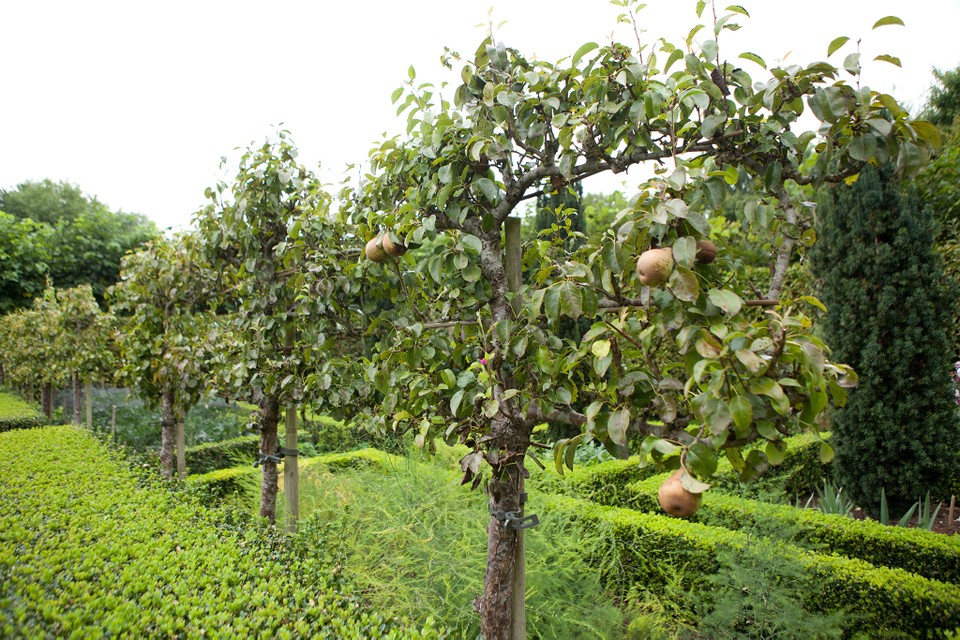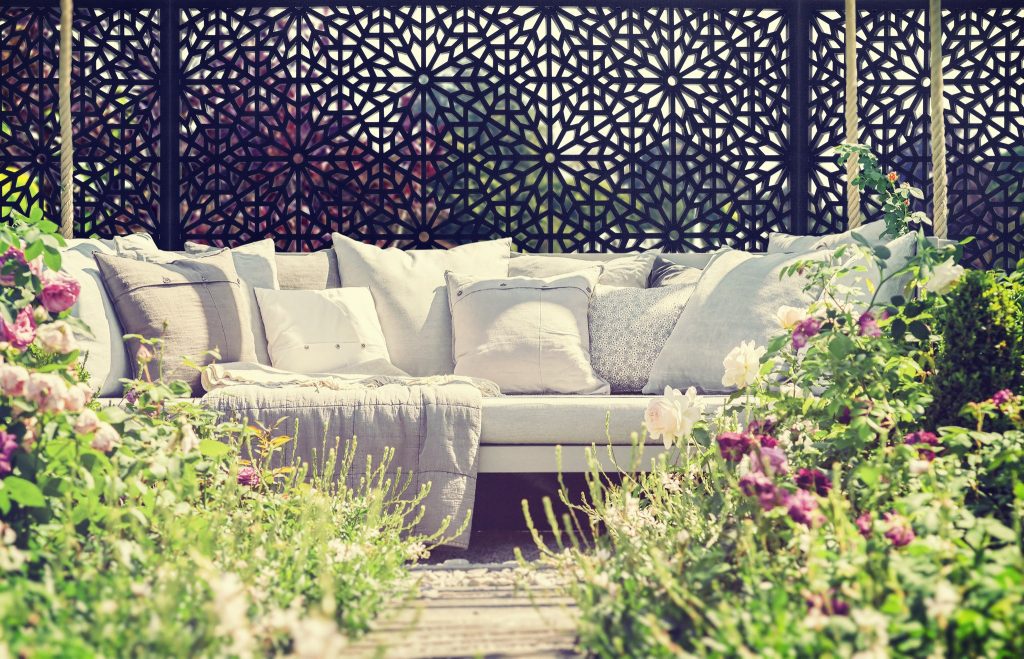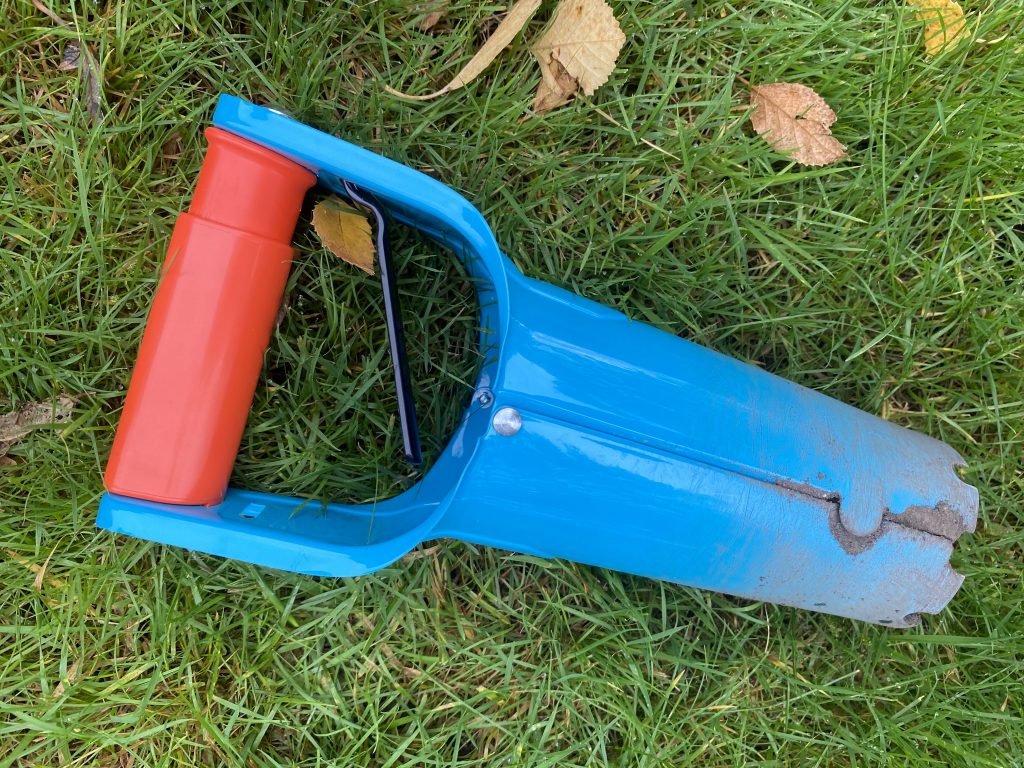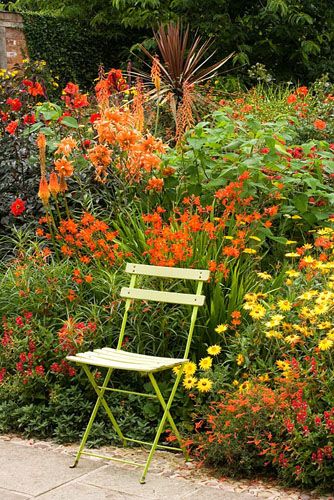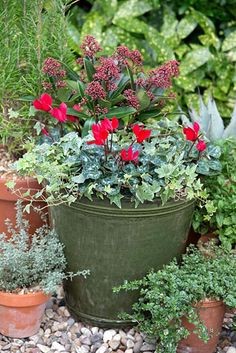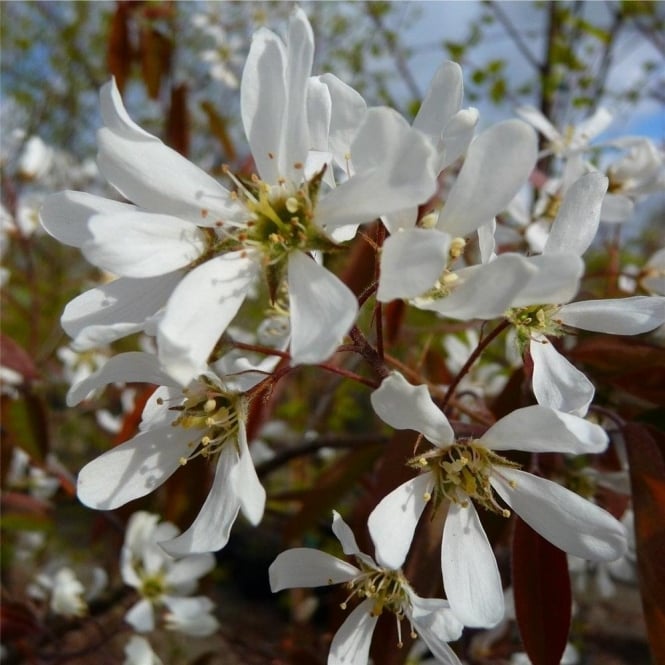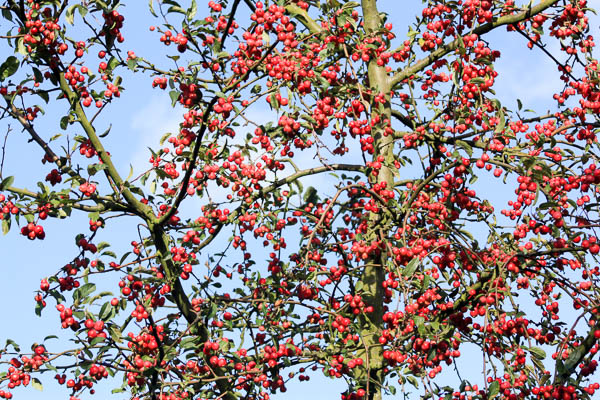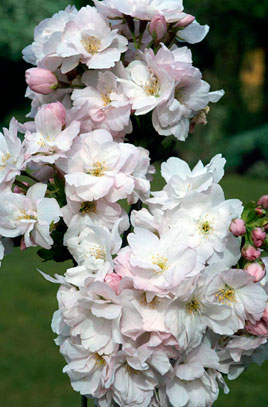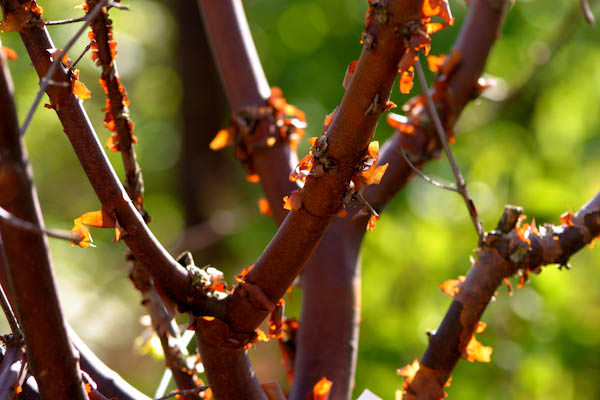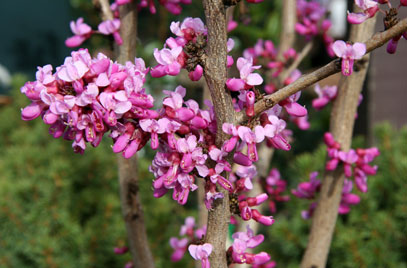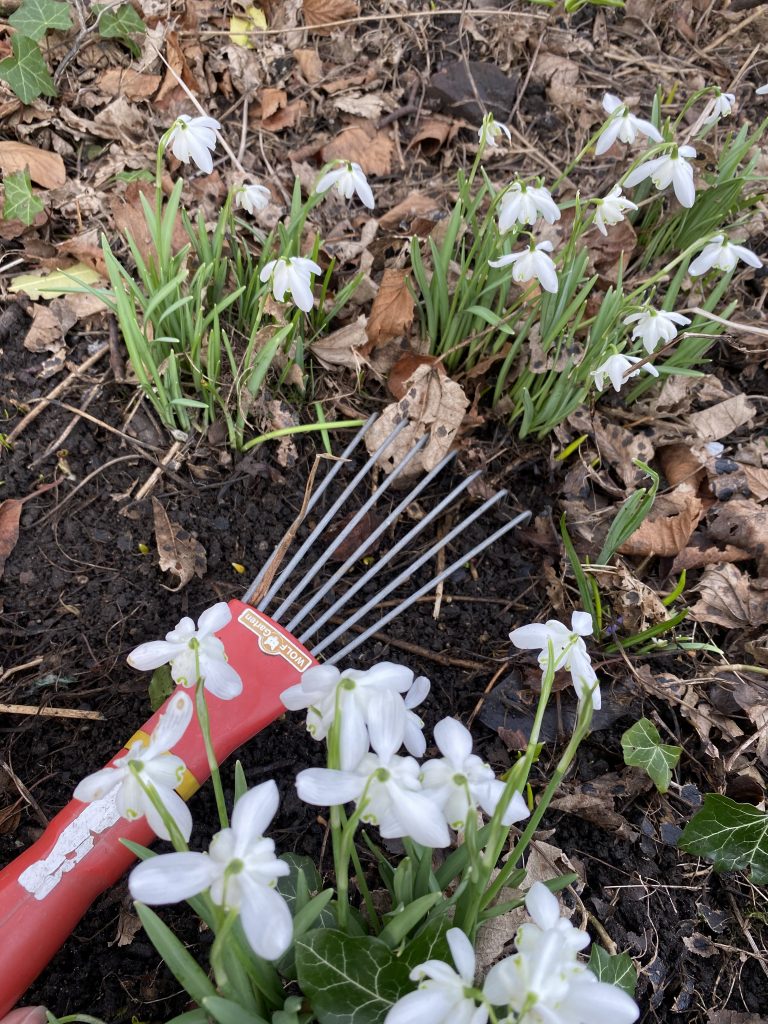
Clearing space for snowdrops 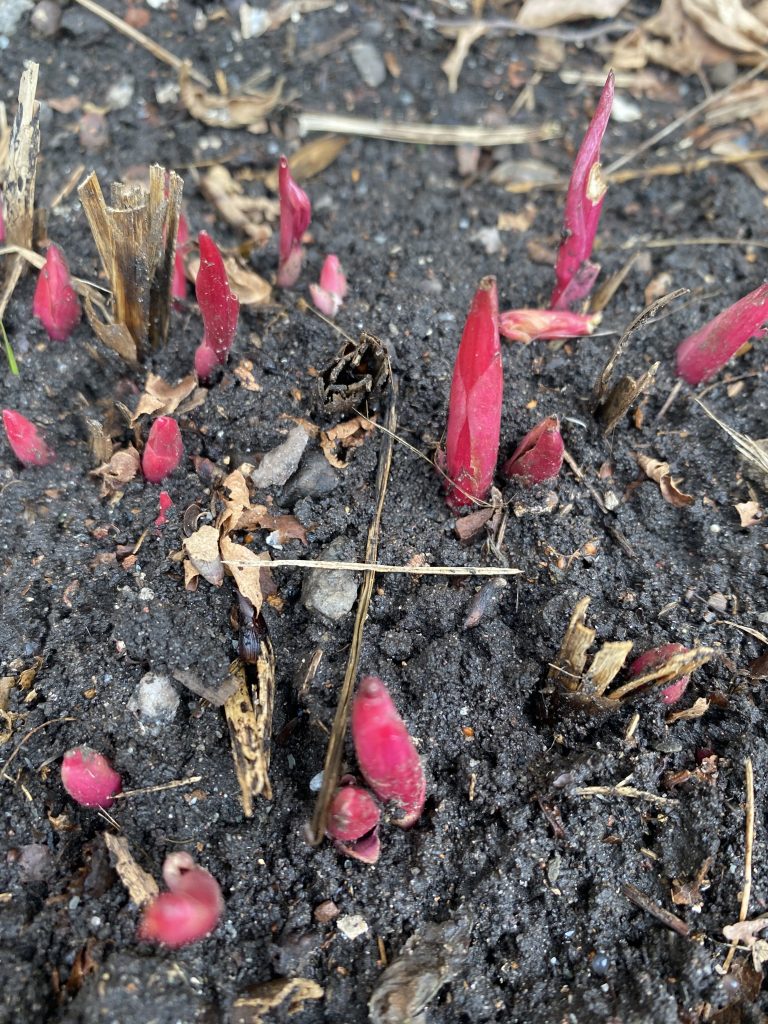
Peony shoots in
newly cleared bed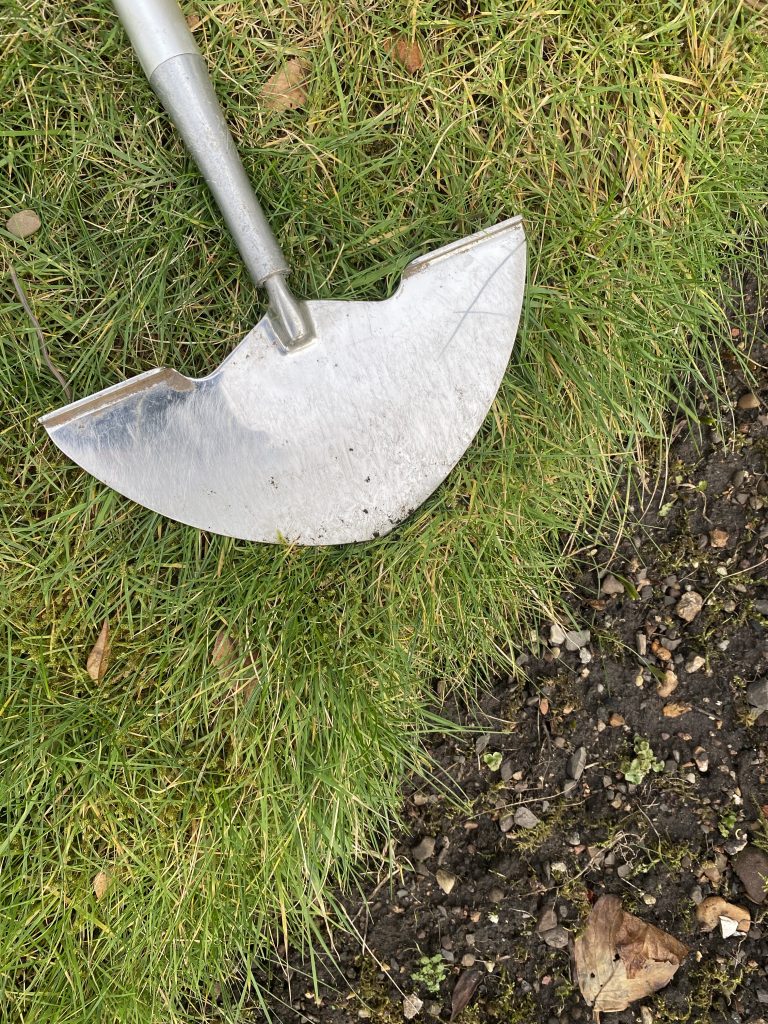
Ready for lawn edging!
Now that the snow has gone and the weather is (perhaps) improving, there are a few jobs you can do around the garden to get ready for the year ahead:
Start in the Shed…
… or greenhouse. Clear out anything left over from last year that is dead or broken. Empty pots and give them a scrub. Wash down greenhouse windows and clear any guttering of leaves and moss. Clean gardening tools with a wire brush. Sharpen shears and give secateurs a squirt of WD-40 to get them moving.
Clear the Beds
Use a spring tine rake to carefully clear moss and leaves from planted beds. Dig out any small weeds that remain – if you stop them getting established now it will be easier to keep on top of them later in the year. Remember to remove weeds from walls and paving too. Mulch the beds with compost to help suppress weeds and add nutrients to the soil. Now’s also the time to clear moss and weed from ponds, but make sure you do it carefully so as not to damage the liner.
Give Things a Trim
Cut back last year’s growth on any remaining perennials and deciduous grasses. Trim overgrown climbers. Prune late flowering shrubs – remove any growth that is dead, diseased, or damaged. Deadhead flowering shrubs like Hydrangeas by cutting stems back to just above the first pair of buds. Don’t prune shrubs that flower in Spring now or you’ll lose this year’s show of flowers.
Spruce Up the Lawn
If your lawn is tidy, the whole garden looks tidy! Nothing makes a lawn look tidier than neatly clipped edges. If the boundaries between your lawn and planted beds have started to blur, start by giving the beds a nice sharp edge using a half moon tool. Follow on by clipping these new edges with edging shears – make sure you collect the clippings. Don’t be tempted to walk on the lawn when it’s frosty though as the grass is more susceptible to damage when it’s frozen.
Clearing and tidying may not seem like most exciting part of gardening, but it’s really worth putting in the effort now to prepare the garden for the coming seasons. And there’s no doubt that spending a few hours in the fresh air on a weekend and seeing the first signs of Spring are a real boost for the soul!
